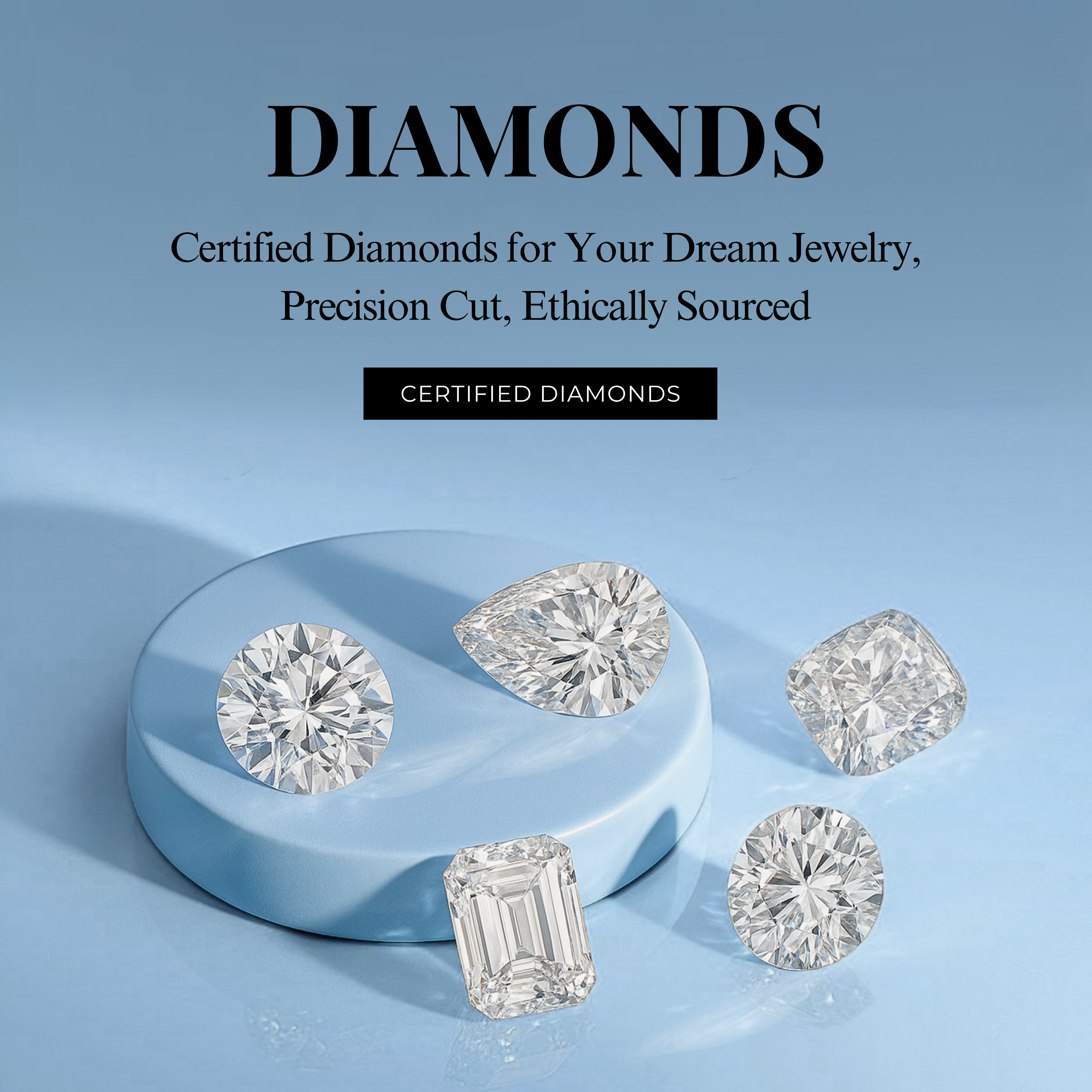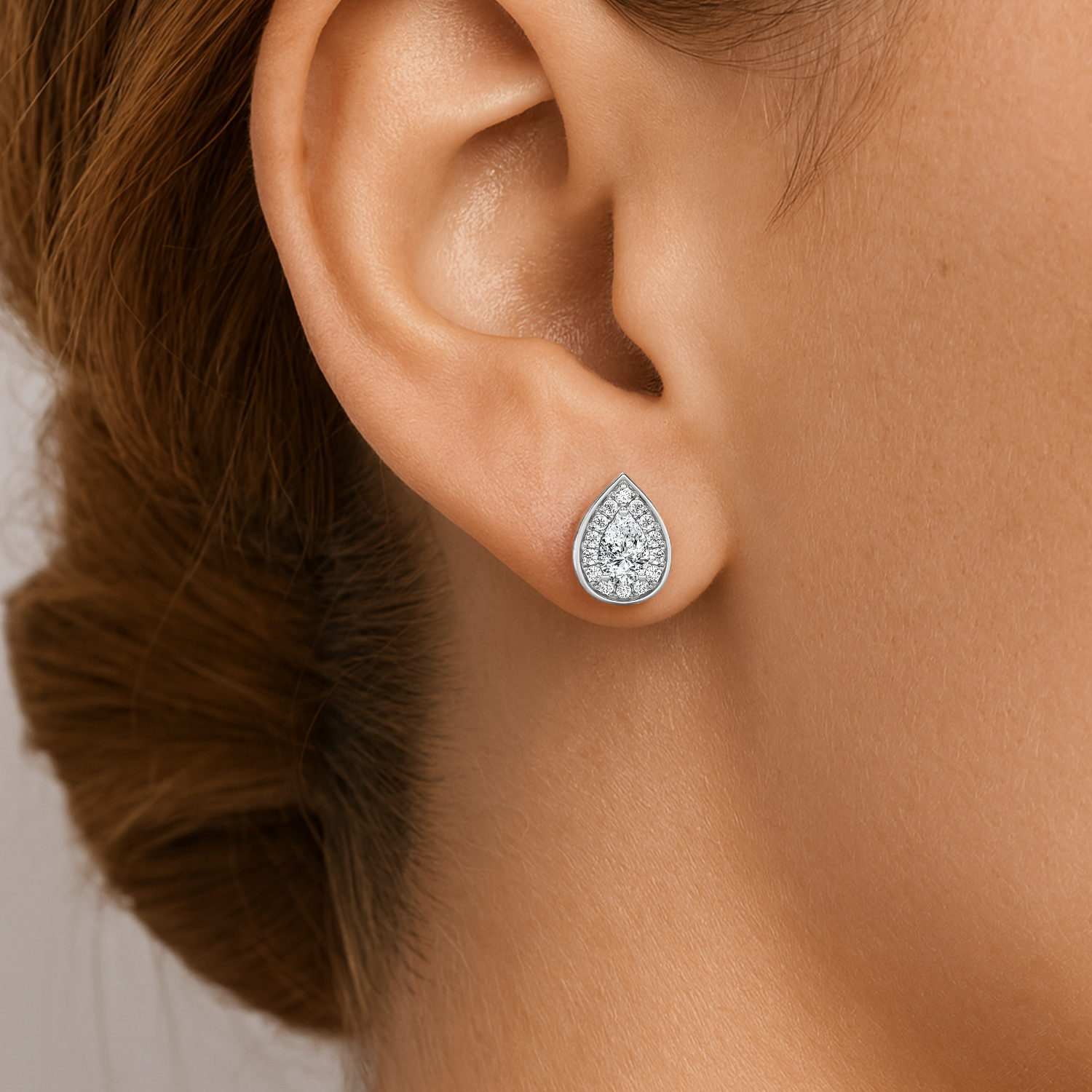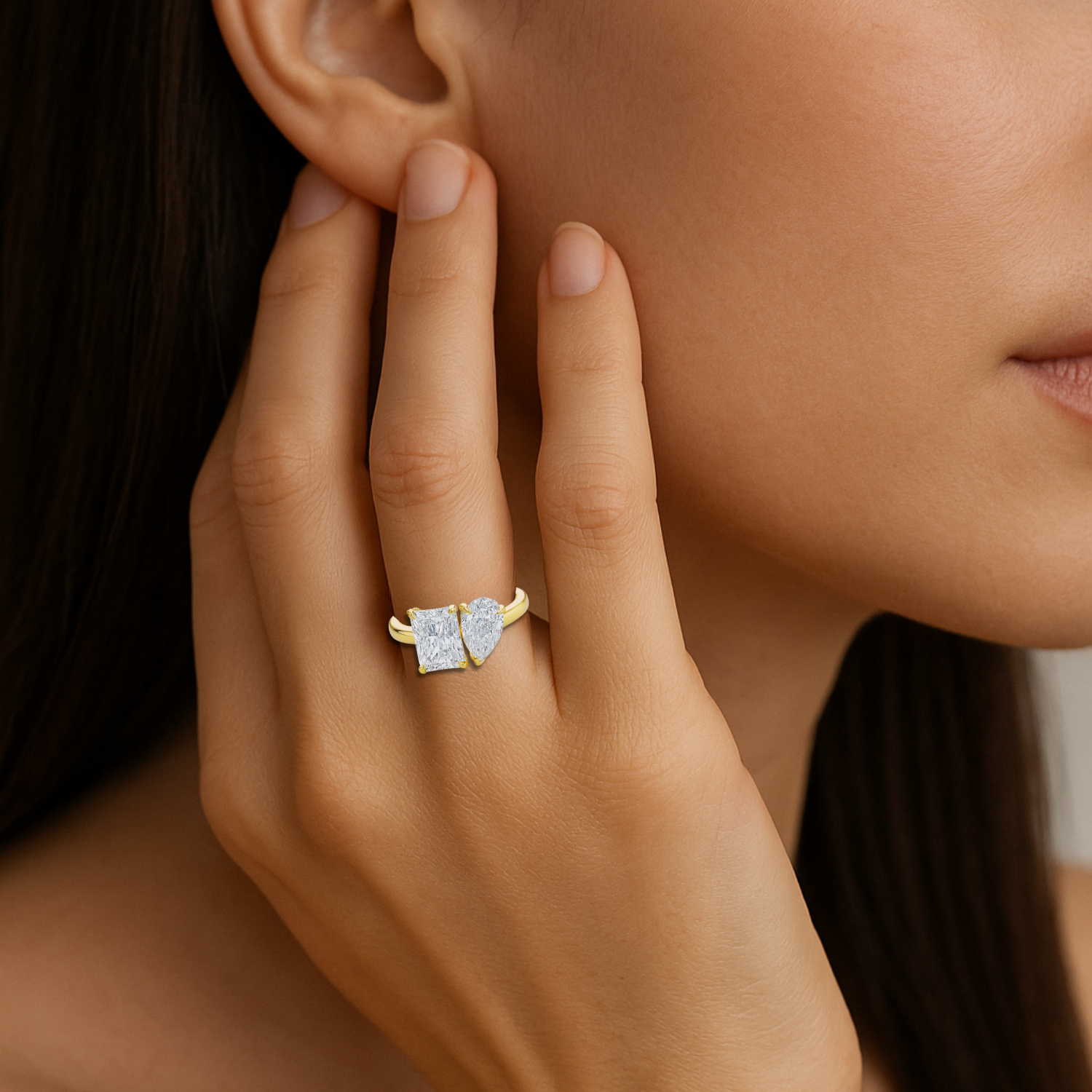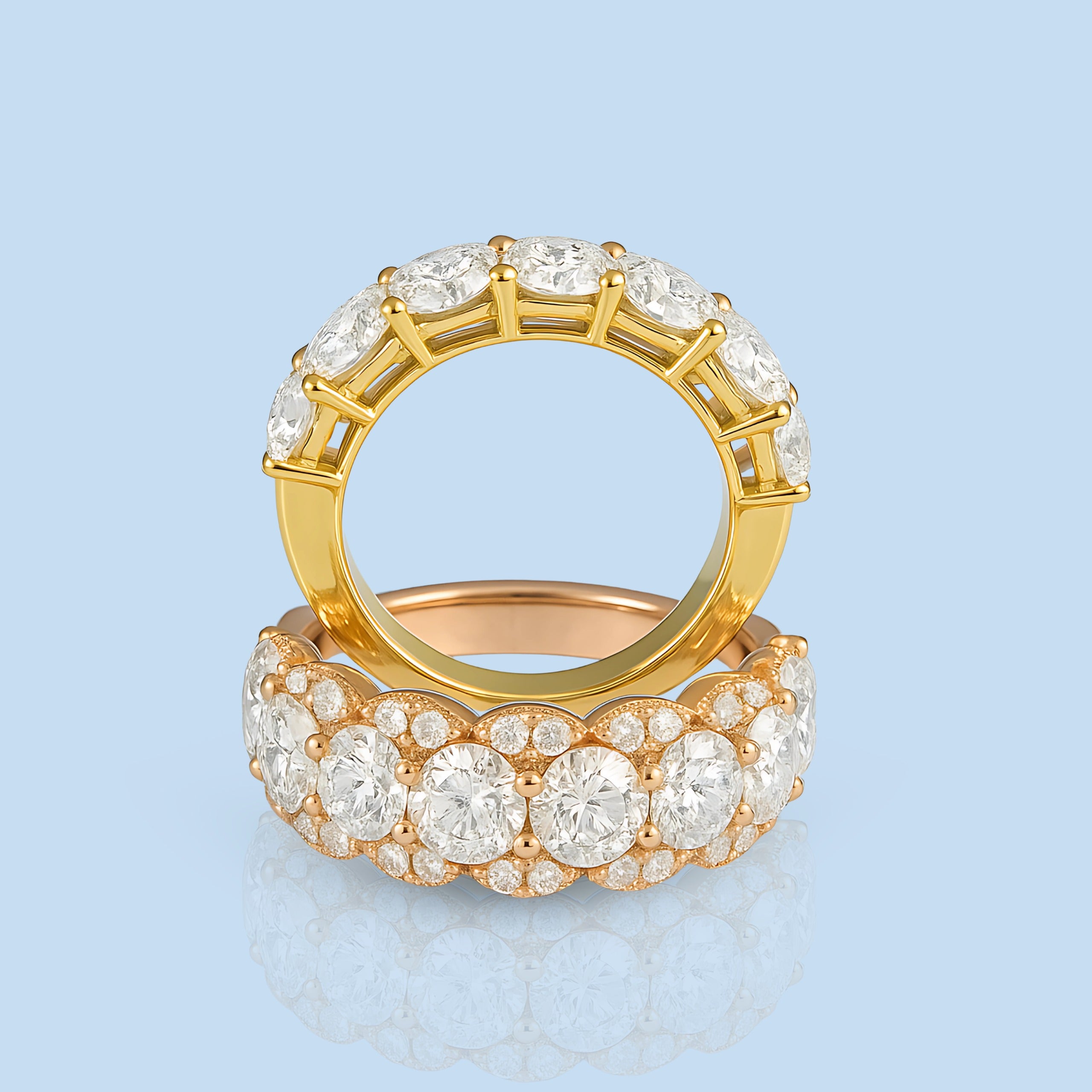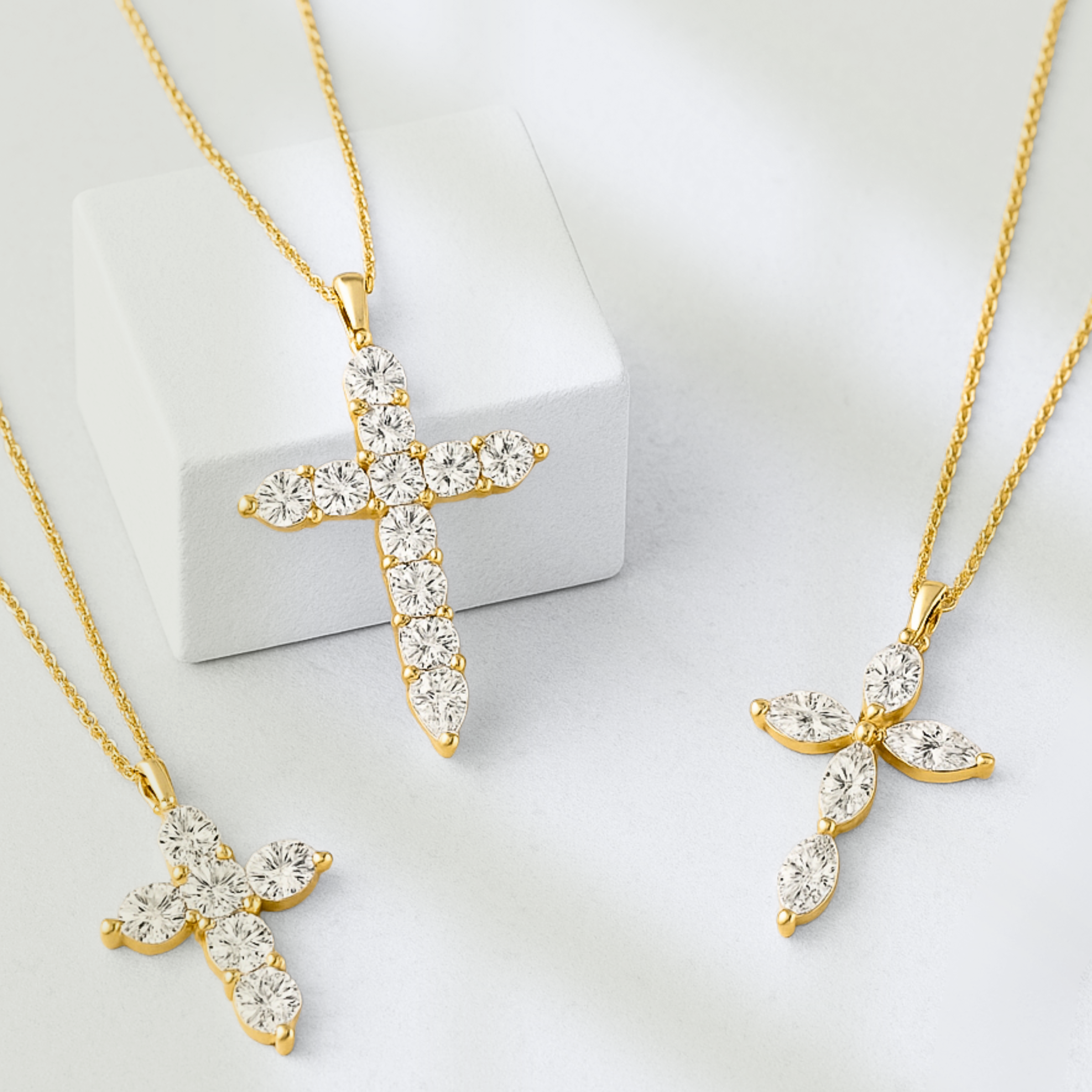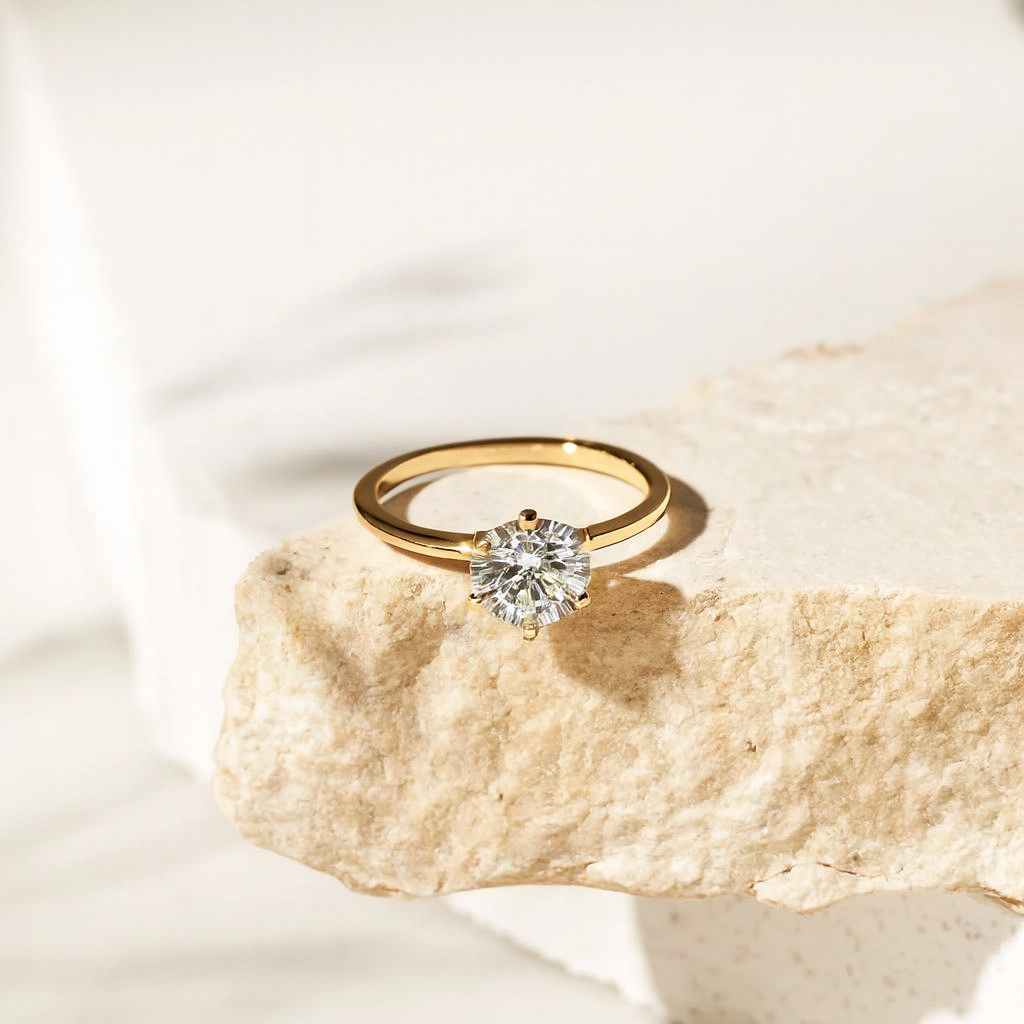
Why Jewelry Lovers Are Turning to Ethical and Sustainable Lab-Grown Diamonds
Sustainable lab-grown diamonds are transforming the jewelry industry as people seek a more ethical and sustainable society. These remarkable diamonds, produced using advanced technology, mirror nature's process but minimize ethical and environmental concerns. Sustainable lab-grown diamonds inspire jewelry lovers to enjoy brilliance, beauty, and full traceability in harmony with their values. Whether you're choosing an engagement ring or elevating daily style, these gems represent a brighter and more responsible future.
What Exactly Are Lab-Grown Diamonds?
Let's clear up an old myth: a lab-grown diamond is real. It is every bit as authentic as a natural diamond. The only difference is its origin story.
With advanced technology mimicking nature’s intense heat and pressure, a lab-grown diamond forms above ground in weeks, rather than deep in the Earth over eons. The result is a stone with identical brilliance, composition, and strength as one found underground.
There are two key methods:
-
High Pressure High Temperature (HPHT)
-
Chemical Vapor Deposition (CVD)
These techniques yield superb diamonds, indistinguishable from natural ones—even to the trained eye using traditional tools.
Sustainable Lab-Grown Diamonds: Ethics and Innovation

The jewelry world is quietly undergoing change. Sustainable is part of a revolution, swapping extraction for innovation and guilt for grace. They redefine what it means to wear luxury with a conscience.
These form above ground, in labs with modern technology. The results are gems with genuine sparkle—without the harm caused by traditional mining. Choosing lab-grown for a ring or a simple necklace means you support the planet and its people while embracing elegance.
The Price Advantage: Luxury That Makes Sense
The cost of lab-grown diamonds is a big reason why they win favor among buyers.
-
They are about 30–40% less expensive than mined diamonds with equal carat weight, color, cut, and clarity.
-
This savings allows people to buy larger gems or finer pieces for the same price.
-
Lower prices enable customization, whether you buy ready-made sustainable lab-grown or a unique design from a top jeweler.
-
Luxury does not mean compromise.
It’s now possible to look stunning, make a smart choice, and feel good about it.
Subscribe to our newsletter for quick updates on our blogs!
Style Meets Sustainability
Eco-friendly jewelry does not mean sacrificing glamour. Leading jewelers combine design flair with skillful craftsmanship. Minimalist rings, dazzling tennis bracelets, and personal pendants now feature lab-grown diamonds for every style.
Whether you’re a minimalist or bold statement maker, lab-grown diamonds let you shine guilt-free. Their origins are transparent, so you always know their story. Select a timeless engagement ring, birthday surprise, or self-treat—sustainable lab-grown adds meaning to every occasion.
Transparency and Traceability in Jewelry’s New Era
A diamond’s journey matters today as much as its sparkle. Shoppers now care about both a gem’s story and its look.
The best jewelers ensure you can trace each diamond’s lab origin and production method. A transparent journey—starting from high-tech labs to elegant rings or necklaces—is now possible.
This openness is changing the jewelry world. Buyers get brilliance and peace of mind, knowing their lab-grown is responsible and beautiful. It’s more than a gem; it’s thoughtful luxury, combining clarity with timeless elegance.
Debunking the Myths Around Lab-Grown Diamonds

Let’s clarify some wrong beliefs about sustainability:
-
"They aren’t real diamonds."
This is false. They have the same brilliance, durability, and fire as their natural counterparts.
-
"They look different."
Absolutely not. Even professional gemologists often need special equipment to tell them apart. Today, smart and responsible choices—not just sparkle—define luxury.
Also Read: Lab-Grown and Natural Diamonds: Quality, Value & Sustainability 2026
Why Jewelry Lovers Are Making the Switch
More jewelry enthusiasts realize that buying diamonds is about meaningful choices. Commemorate big moments, like engagements or life milestones, in an ethical way. Modern buyers want a story behind their jewelry—not only a dazzling gem. It offers radiant beauty without harming the environment or ethics.
A Future Shaped by Sustainable Lab-grown Diamonds
This shift is not just a passing trend. It's changing luxury for a generation that values ethics. As technology advances, the jewelry industry grows more innovative, open, and responsible while supporting relevant sustainable development goals.
From affordable pricing to eco-friendly methods that minimize waste, every aspect points to a considerate future. Owning lab-grown is about more than selecting a beautiful gem—it's choosing progress, where each piece of jewelry tells an honest, dazzling story.
Ready to choose sustainable lab-grown diamonds and embrace brilliance with a conscience? Discover elegant, responsibly crafted jewelry at Fine Diamond. Every design celebrates harmony between luxury and responsibility and delivers diamonds that shine with your values and for a sustainable tomorrow.


 Round
Round  Marquise
Marquise  Asscher
Asscher  Princess
Princess  Cushion
Cushion  Pear
Pear  Heart
Heart  Emerald
Emerald  Oval
Oval  Radiant
Radiant 